|
Change is changing
We talk about change management. Change as a process. We tend to think of change in business as something that needs to happen once in a while, when the need arises. It’s uncomfortable, but necessary. There is a whole industry called Change Management that has built up over the years to help people through these inflection points. Change management is big business these days, because...
Change is changing
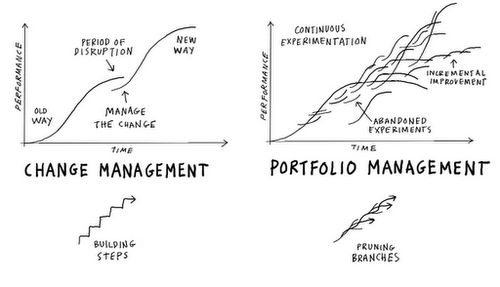
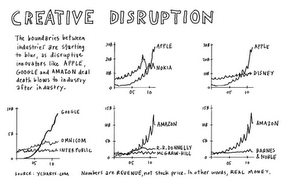
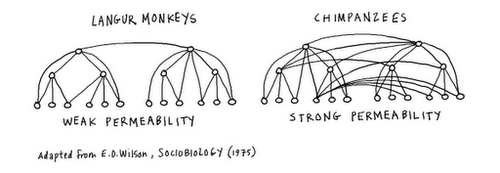
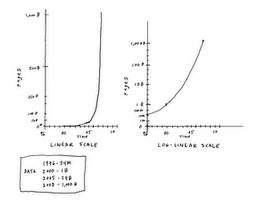
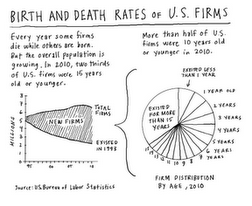
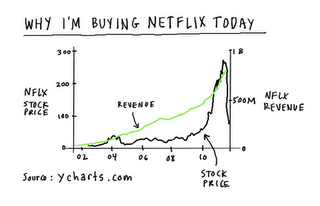
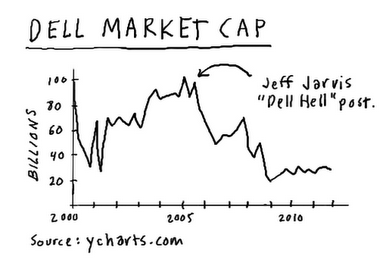
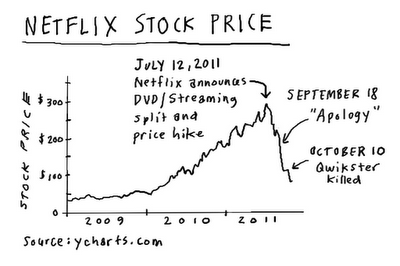

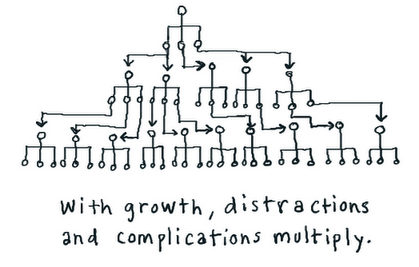
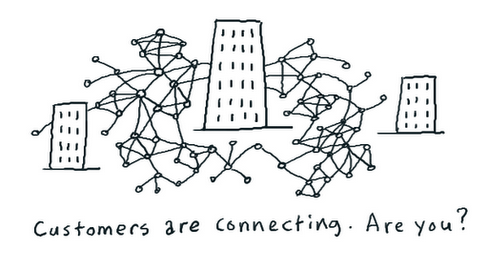
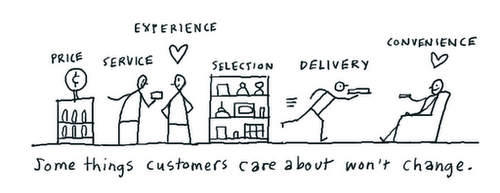
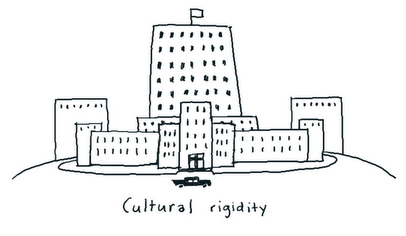
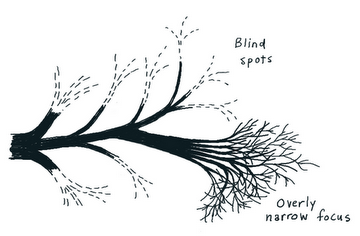
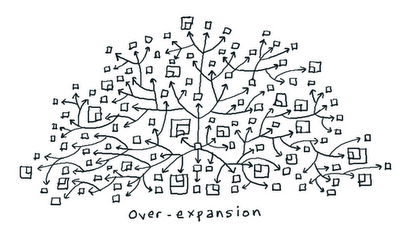
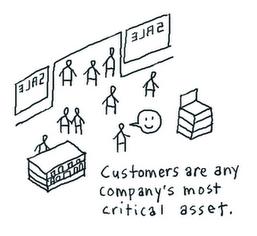
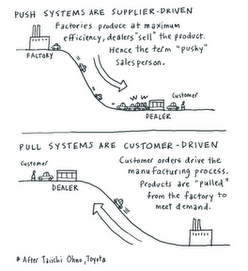
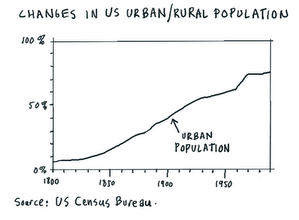
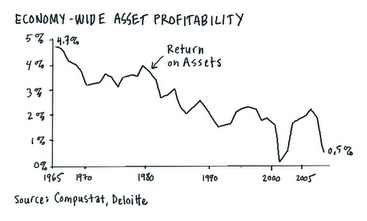

Dana Chisnell - Constant change is here to stay.
Oct 19, 2011
David Amerland - +Dave Gray It was Herodotus who said some 3,000 years ago: 'all is flux, only change is changeless,'
Oct 19, 2011 +1
Joe Oviedo - Count me in +Dave Gray. Lets set a destination, a cause, a purpose of existence and branch out like crazy. Trying, experimenting, testing, refining, adopting, trashing and keep going. Part of me governed by the industrial mind set finds this challenging. Another part of me governed by the informational mind set shows me a 1000 possibilities everyday.
Oct 19, 2011 +1
Joel Adkins - This is the same conversation we have been having about education which in itself is the concept of change. Learning is change. Learning is constant. And learning needs to be fun and inspiring to kids (and teachers) to encourage them to take on more learning.
Oct 19, 2011
Matt Ridings - Love this +Dave Gray . It's certainly a good case your 'podular' groupings (although we have to figure out a model for repurposing all that human talent effectively when pruning. Constant change can't be confused with instability, particularly at the individuals level, resilience is the name of the game)
Oct 19, 2011 (edited)
Dave Gray - I don't see pruning as being about people. We need to see business models and experiments as things that are valuable for the learning when they fail as much as when they succeed -- we've learned 99 ways not to make a light bulb' as edison said -- my thinking is that talent will be valuable enough and scarce enough, and company platforms will be so market like, that workers will self-select in and out of companies and projects more often than they will be fired. We prune the funding, the projects, not the people. We create a market and a platform and give people tools for them to create with. Then they go to town.
I like G+ -- how could I say this on Twitter?
Expand this comment »
Oct 19, 2011 +1
Larry Irons - Talent, if anything, is in surplus. What we lack is the organizational wherewithall to provide opportunities for its exercise. Change management IMHO doesn't begin to consider this point. Perhaps the market is the solution, though I doubt it. Too much institutional inertia in the mix.
We don't have to think people deserve equal outcomes to assert that equal opportunity is what allows societies to produce more value than the sum of their parts.
Oct 19, 2011 +1
Dave Gray - +10 Larry. Providing a level playing field is a big piece I think. Companies that provide platforms or cooperate to create shared platforms and create opportunities for cross-company as well as cross-disciplinary collaboration will have an edge in networked ecosystems.
Oct 19, 2011
Matt Ridings - I don't know that I agree with the notion that pruning shouldn't contain a model for how best to repurpose people in the most efficient way. A few reasons, one is that I think the talent pool contains a lower degree of comfort with transience (between companies) than you're suggesting. Another, and more important to me, is that the most valuable aspect that came out of all that learning lies within the heads of those individuals. It is that transfer of knowledge that makes the pruning model valuable in my opinion, no amount of documentation can equal that.
And I agree about G+, but as much as I love it I find myself going days without touching it sometimes. There's an issue with stickiness that I can't quite put my finger on.
Expand this comment »
Oct 19, 2011
Dave Gray - Larry, I don't necessarily mean market in a global economic sense so much as market development through platforms and community commons. Yes money but also reputation, ranking, collaborative filtering and finding a la Amazon.
Oct 19, 2011
Dave Gray - Matt, I think as customers and employees begin to realize their value, they will start to perceive when their value is underutilized, and they will soon learn to repurpose themselves and move to where they will do the most good. Sometimes within their company, sometimes not. It is a matter of time, learning and building confidence. At some point they will begin to see the exciting possibilities of a more enrepreneurial approach. Companies who lock away or 'protect' their talent in disconnected silos will end up with the risk-averse, less entrepreneurial types. So who do you think will win?
Oct 19, 2011 +2
Matt Ridings - We don't disagree at all....with a certain segment of worker. Yet a fertile field must be provided for that type of organic branching, which to me means ensuring those workers can see the opportunities of planting their seed in that field and tending it to a hopeful harvest. (enough of the sappy metaphors yet?) It's a overarching culture and the environment that feeds it that needs to be provided to those workers. We tend to talk about the more static parts of a company structured like you're suggesting as being the 'backbone', those fundamental services common to all units (finance, some IT, etc) but to me the real backbone is that culture and environment.
In some cases, change means that the things providing value to the company are things that worker can no longer provide. The choice then becomes whether those lessons learned are valuable enough for an organization to shoulder the costs of training/education, or whether that worker moves on...whether the company provides fertile enough ground to stay basically. Seems to me that's an important function.
Expand this comment »
Oct 19, 2011 (edited) +1
Michael Ricard - There's a sense-making model for all this: the Cynefin Framework by Dave Snowden of Cognitive Edge :
'A decision-making framework that recognizes the causal differences between system types ... and proposes new approaches to decision-making in complex social environments.'
The Cynefin Framework
See it applied with the example of a Children's Party:
How to organise a Children's Party
Expand this comment »
Oct 20, 2011 (edited)
Dave Gray - +Michael Ricard Thanks for pointing me to that video. I've had several people point me to http://www.cognitive-edge.com and found the explanations there pretty impenetrable. Mr. Snowden's video explanations are far more effective. I wonder why he doesn't feature them on the site?
Also, how did you embed links in your comment? I just tried html and couldn't get it to work.
Oct 20, 2011 (edited)
Michael Ricard - I believe the videos are on the site, but they aren't highlighted as such, and usually are situated within blog articles. I find Dave a very eloquent speaker about complexity theory. He has a rare ability to make often difficult topics understandable to wide audiences through clever analogies and humor; an important consideration when dealing with organization-wide transformation. A recent example when you have time to view it: http://vimeo.com/30596502.
I enjoyed your fine post challenging the accepted approach to change management. Businesses do need to become more agile going forward.
I just pasted the URL into the comment box, and it picks up the video/page title automatically.
Expand this comment »
Oct 20, 2011 (edited)
Dave Gray - +Michael Ricard I think the frameworks and methods he describes will be far more useful when we start to make changes to org structure to allow more freedom of motion for individuals and small teams.
http://connectedco.com/2011/04/18/the-future-is-podular/
Oct 20, 2011
Michael Ricard - Hmn, an interesting question. Restructure before rolling out the framework, or vice versa. I suppose companies will take either approach depending on what suits them best. I think in order for success, lots of communication is called for at all levels of the organization in order to best lead org transformation.
Oct 20, 2011 (edited)
Brendan Thesingh - Fun? Now there is an interesting concept. Have you read Orbiting the Giant Hairball? http://www.amazon.com/Orbiting-Giant-Hairball-Corporate-Surviving/dp/0670879835
Oct 20, 2011
Ana Neves - This is great, Dave. And this is the reason why I talk about 'cultural change' and 'change' in general and why I hate talking about 'change management'. It's all to do with the act of changing, of adapting the organisation to a continuous changing environment. One important thing though: there should be a conscious effort to create a culture which is adaptable and which welcomes change.
Oct 20, 2011 +1
Brendan Thesingh - I'm putting my foot in it here and this is probably something you guys hear all the time. I'm saying it because I read the word culture a lot. But isn't the general culture or nature of people to dislike change?
Oct 20, 2011
Matt Ridings - +Brendan Thesingh Yes, wrote a brief piece related to that recently http://www.techguerilla.com/cognitive-dissonance-why-change-is-hard
Oct 20, 2011
Dave Gray - +Brendan Thesingh I think people like change that they initiate themselves. They tend to dislike change that is impose on them from others. This is why entrepreneurs often seem to enjoy their work so much.
This is one of the reasons I am saying we need to change the whole concept and turn it on its head to give people more autonomy in their work.
I have written more about the kind of structural change that enables this at http://connectedco.com/2011/04/18/the-future-is-podular/
Expand this comment »
Oct 20, 2011
Brendan Thesingh - Nice, I'll read more on that. I like the the drawings, do you make them yourself? Reminds me of the drawings in Orbiting the Giant hairball where the organisational pyramid is turned around and turns into a fruittree. Symbolizing that management could be there for the workforce instead of being a slow bureaucratic tomb.
Oct 20, 2011
Dave Gray - +Brendan Thesingh yes I do my own drawings :) Glad you like them!
Oct 20, 2011
Chris Oestereich - +Dave Gray Have you seen the new Mind Time Maps tool? (http://www.mindtimemaps.com/) If not, it's well worth the five minutes to kick the tires. (I have no connection to the tool or its creators.) The profile piece helps bring awareness to preferred frames for thinking from a time-based perspective. I could see those categorized by the tool as future thinkers creating your branches and its present thinkers tackling the pruning. I'd love to hear if you have any thoughts on this.
Oct 21, 2011 (edited)
Brendan Thesingh - +Dave Gray I like the illustrations especially because they make it more accessible and down to earth. Overly stylized infographics are nice, but can also be intimidating.
Oct 21, 2011
Joan Laine - Seems like a great application to assess the alignment between an employees view of their organization and that of the organizations vision and mission. From there it would then be possible to plan where the change impacts would be the most effective.
Oct 21, 2011
Phil Wolff - Dave, do you imagine a fusion of Change and Portfolio management? A hybrid? Does Portfolio displace Change? It's not clear how the two management processes relate.
Oct 21, 2011
Dave Gray - +Phil Wolff I'm still thinking about this but I believe structural change is part of it. Take a look at this and see what you think: http://connectedco.com/2011/04/18/the-future-is-podular/
Oct 21, 2011
Dave Gray - +Joan Laine Alignment is an interesting topic. On the one hand, we want a diversity of perspectives and opinions. On the other hand, we want people to be aligned and moving in the same direction. If we are going to try to design and manage a continuously evolving organization I think we will see more conflict and more ambiguity -- at least I think people will have to be more comfortable with the idea that they are not always aligned and that can be a good thing.
Oct 21, 2011
Rawn Shah - Hi +Dave Gray +Susan Scrupski, I finally had a chance to get to this. I agree that the rate of Change is increasing until it seems continuous, but we need to be clear what the difference between changes in specific areas, and actual constant omnipresent change affecting all areas.
First, I have to say, most of the change management activities I've been involved in are not because of a reaction to an adverse economic situation to a company, but because org leaders are seeing opportunities. That may also depend on the scale of change itself.
Change management techniques have been classically designed for (a) large scale efforts (as in how much of the organization it affects and how different it is); (b) a well managed project format; (c) along specific areas of change (e.g. org reporting structural, org culture change, infrastructure change, technological change, etc.).
The techniques themselves are common enough: envision current and future state, identify people and processes affected, create education, enlist change agents, etc. The difficulty there is that this tend to be the significant overhead regardless of if it spans the entire company or within departments.
I think your point isn't that change is constant, but there is that so many specific areas of change are happening to such a degree that coordinated programs may not be effective. More than that with so many changes going on it is hard to organize a program before the next change comes around.
What employees face then is a stream of many messages of what they need to change to. Believe me, after a while, they will just ignore them and keep doing what they are doing because it becomes a steady drone and it becomes mental load to understand what you are changing.
Another stopping point is that Change agents themselves may become overloaded. These are the folks who are influential on a large or a small level across the organization. If you do some social network analysis, you'll find that they are the key nodes in the network that more people connect and interact with. With many multiple changes going on, they may become overwhelmed even more so than others, because the change leaders keep returning to them. This is a one of the challenges of being a leader (in the broad sense), because being a change agent does mean you are are leader, whether officially or not.
In summary yes, I agree that change needs to be more about capitalizing on opportunities and creating value, in other words change that is leading rather than lagging. However, what we need is to figure out beyond that first thought is what Change management should look like with overwhelming quantities of changes.
Expand this comment »
Oct 21, 2011 (edited)
Dave Gray - +Rawn Shah one paradox I see is that while large orgs have the largest populations (which would make portfolio management a very viable innovation strategy), they also tend to have the largest bureaucracies (which would tend to kill or at least dampen entrepreneurial activity).
Do you think relaxing or eliminating big chunks of bureaucracy could unleash some of that change energy?
Oct 21, 2011
Rawn Shah - That's a good one but the real question how to eliminate bureaucracy. The problem with large bureaucracies is that they develop over time: some are responses to then-current issues, some are initiatives that emerge during changing leadership that just carry on, others are fixed onto crucial processes which cannot tolerate change.
That change tolerance/inertia, as well as the fortitude to actually kill it is what is really challenging. Things like peoples jobs, skills, tactical operations all grow up around these things. I'm not advocating we need to sustain them, to manage this lagging change we need (a) authority to change/eliminate/merge them (b) give up the nostalgia hanging on to some benefits that they create (c) determine good ways of redistributing people and resources.
In part, people don't like being forced to change, and part of eliminating bureaucracy is often taking them out of the role they are in. So, its not as simple as it sounds.
Developing the ethics and org values to instill such change is certainly a good thing, but people still panic when their jobs are on the line. This goes into a slightly different angle but starts to get to the heart of the matter.
Part of my talk a few weeks ago on the Blurring of Job Loyalties is exactly about developing the capacity to live with such changing situations. (If you're interested its here: http://www.slideshare.net/rawnshah/the-blurring-of-job-loyalties-social-collaboration-and-personal-freedom)
Expand this comment »
Oct 21, 2011 +1
Dave Gray - +Rawn Shah Agree that bureaucracy is like kudzu that grows and multiplies itself with time. And once initiated it's hard to kill. Have you seen Reed Hastings' deck on keeping bureaucracy to a minimum? http://www.slideshare.net/reed2001/culture-1798664
Oct 21, 2011
Rawn Shah - Yes, I have. Seems logical although I don't see any evidence behind what he says. For one, Growth does not always equal complexity -- scaling a company that produces a few things by adding more workers is scaling and not necessarily making it more complex.
Processes vs. Talent is always the challenge because the former basically works without need for the other. The work or the products themselves may not need talent, but humans do. The fulcrum here is the level of quality (and the talent needed to produce it) that customers would pay for. This in turn depends on the type of company you have: e.g., do you produce premium products or commodities? There's market for both types.
Expand this comment »
Oct 21, 2011
Brendan Thesingh - I think an important aspect in this discussion is motivation. What is the motivation of the people working in an organisation? You might not believe it, but not everyone enjoys their job. Actually I think a lot of people would be fine with a minimum of effort and some nice colleagues. That brings something else into play: Leadership and management, what do the people in charge do? Is the company hiring the right leadertypes for all positions for a modern networked company? I recommend reading http://bobsutton.typepad.com/my_weblog/2011/09/our-new-york-times-piece-on-evidence-based-management-the-uncut-version.html and watching RSA Animate - Drive: The surprising truth about what motivates us
Expand this comment »
Oct 22, 2011 (edited)
Carter Williams - Your mixing metaphors. You need to be careful because Clarke, Henderson, Christensen etc all have very clear definitions. For example, shifts in S-Curves are not disruptive, change in the variable in the Axis is disruptive because it destroys incumbet assets.
Oct 22, 2011
Dave Gray - +Carter Williams Hey Carter, nice to see you here!
Are you objecting to the term 'disruption' in my diagram? That's easily altered. It seems to me that shifts in S-Curves certainly disrupt business operations, but if that's a confusing term in this context I can change it. In a similar chart, Foster and Kaplan call that point between S-Curves 'discontinuity.'
Are you also saying I should distinguish more clearly between incremental and disruptive change?
I believe that the acceleration I'm talking about applies to both kinds of change. It's an effect of co-evolution among firms, which is increasing the rate of change in the environment.
Expand this comment »
Oct 23, 2011
Dave Gray - +Brendan Thesingh motivation is definitely an important part of it and I can definitely see why a lot of people would be fine with a minimum of effort and some nice colleagues. But a minimum of effort is not what most companies want and a workforce with that attitude is probably not going to be good for the long-term health of any company. So while those people are enjoying their jobs their company could be slowly (or quickly) becoming obsolete.
Oct 23, 2011
Carter Williams - Disruption, a good broad term, is best used to describe a change in market preference. There are 3 key forms of disruption - technical, architectural, and market. A technical disruption is really an evolution of existing technology to another level, and normally favors an incumbent. This is the typical S curve and tends to really be a process, not product, breakthrough. It rarely impacts the organization norms. An Architectural disruption is a shift in how performance is delivered. So if the key industry performance criteria is fuel mileage, the switch from a standard carburetor to electronic ignition is a good example of architectural disruption. This has a big impact on internal organizational issues because all of a sudden software becomes more important and the manger of fuel systems, likely being a Mechanical Engineer, wont know how to manage software risk. Architectural innovation is a challenge, but is often a risk managed within the firm. Market disruption is much more problematic because its a shift in performance criteria. There is a point at which the S-Curve delivers enough. For example, there comes a point where incremental improvements in processor speed just don't matter any longer to the market, but maybe portability (energy performance) does. These are very tough disruptions because the internal sales team is selling to their biggest customer who has a lot of stubbornness to pursue their existing speed hungry market, but the emerging market is on the flank developing things like smart phones. The internal team will fight like hell, often too long, claiming the emerging market is transitory. They do this because what made them good at driving S-Curve efficiency (process discipline) makes them bad at detecting market changes (product innovation). So, I believe the term disruption should follow closely with Clay's observations being focused on shifts in market preference - because those shifts dramatically impact revenue and market structure.
Expand this comment »
Oct 23, 2011
Dave Gray - +Carter Williams thanks. The accelerating change I have data on is company lifespans. But I imagine if you looked at this you would see a fractal pattern, with technical disruptions happening the most frequently and market disruptions less frequently.
The data I am working with here has to do with company lifespans, much of it from Creative Destruction by Foster & Kaplan as charted here:
http://www.flickr.com/photos/davegray/6260861765/in/photostream
http://www.flickr.com/photos/davegray/6260923275/in/photostream
I also charted some revenue of disruptors vs incumbents here:
https://plus.google.com/u/0/117373186752666867801/posts/SLBPeC2JS9d
So the thing is, it seems to me, that if
1. The whole system operates as a fractal (that's a guess) and
2. The slowest of the three patterns is the market disruption, and
3. The pace of these disruptions is accelerating,
then we can expect more and more disruption until the whole system manages to find a new equilibrium.
It looks to me as if many of the most notable disruptors are gaining rapid advantage due to a combination of new business models and some amplifying effects that they gain via connectivity, reach and network amplifying effects they get from the web.
It's as if a tropical rainforest has quickly sprung up adjacent to a mature ecosystem and they are in the process of trying to find a balance.
Are you back in STL? I think we are due for a coffee :)
Expand this comment »
Oct 23, 2011
Carter Williams - The impact of disruptions are a function of detection and reaction. Detection - are they occurring. Reaction - should I do something about it. In certain markets the ability to detect is improved dramatically because of the Internet. And the ability to react has also changed - i.e. lean development. So yes, speed is increasing. But in more complex markets (Aerospace, Drug Discovery, Energy) the pace is likely slower. Key thing to look at is information flows in a market. If the flows are open and active, innovation will happen quicker. The potential fix for slower markets is to modularize systems so that they can be fixed/updated with more direct information flows - google Design Structure Matrix and you will see what I mean.
Expand this comment »
Oct 23, 2011
Paul Grogan - I study this for a while it it appears that vertical growth and horizontal growth are constantly in peril of one another.
Nov 12, 2011
Dave Gray - +Paul Grogan so true!
Nov 12, 2011
Paul Grogan - I see it as transformational habits, not change management. Look at companies that have 100 or more history. They all harnessed change and maintained core values. Whilst improving infustructure.
Nov 12, 2011
Dave Gray - +Paul Grogan not many companies make that leap successfully -- and often the culture needs to change. I'm thinking of GE and IBM for successful examples where cultural change was key to the transformation, Kodak for failure. Then you have GM, Chrysler and some banks who would have failed without government bailouts.
Nov 12, 2011
Paul Grogan - +Dave Gray Chevy just celebrated 100 years, Ford is very stable and several finance companies and oil companies are stage to live through the end. Markets that seem to die is those without training models. Microsoft made this prominent. Google embraced is, apple envied it. I look at the shifts like Hersheys and watch how they influence micro economies. The change of them broadening through a global enterprise. sorry no drawings...
Nov 12, 2011
Paul Grogan - + Dave Grey I would like to discuss changing, change in the employee market place and the spaces you have gaps.
Nov 12, 2011
Peter Burgess - I love these pictures! They make you think!
What is the purpose of economic activity? What, indeed is the purpose of life? These are not idle philosophical questions, but in my view the essential underpinning of modern society and economy. We have economic activity above all else, to produce things that we need. Throughout history until quite modern times knowledge and technology did not enable us to produce enough to fully satisfy needs and the world was a shortage economy. In the last century or so technology has progressed in an amazing way and production technology makes it possible to produce all we need ... but the capitalist market economy does not work so that all who need have a chance to satisfy their needs. This is a problem.
The capitalist market economy is a whole lot better than communism ... but it is not good enough, and has not addressed the functioning of an economy beyond the idea that profit will drive economic innovation and progress. It does that, but not for everyone and only satisfies needs that are profitable. Many needs are important, but are not immediately profitable. They have what I call 'valueadd' which is a rather better metric than profit for determining where resources should be allocated for investment.
In money profit accounting there is a balance sheet, and P&L account and cash flow that all integrate together to show the performance of an organization. I see a value market economy where the state, progress and performance of a community (place) are accounted for in a similar way. The state is like a balance sheet that shows the quality of life, resources, etc of the people in a community at the start of a period. A second state is the same elements at the end of the period. Progress is the change between the beginning and the end of the period. Performance is the resource consumed (net) to support the economic activities that moved everything from beginning state to ending state.
The purpose of economic activity is to maintain and improve quality of life. The purpose of life is to enjoy, and be able to pass this enjoyment to future generations.
Modern technology allows us to design economic activity so that needs are met and some wants are met ... needs that have value and wants that have value. Profit. GDP growth and stock prices are measures ... but they do not measure anything of fundamental importance. They don't ensure that funds get allocated to the maintenance of the 'commons' so important to quality of life and the future of humanity.
Note that in this framework. the community (people in a place) are the reporting entity with organizations in a subsidiary role. People and place are more important than organizations that merely enable a community to perform well ... whether they are business organizations or government organizations. Both should be in service to the community ... in a subsidiary role and not reigning over the community.
Value is of course subjective ... and that is important. We can have different views about the value of any specific thing, so each person has a value profile ... which adds up to a community profile ... which adds up to a national profile ... and to a global profile. The quantification of value is done relative to other values ... and is not merely the price one is willing to pay. Food that keeps one alive has more value than food that makes you feel good but really is excessive! Value is used in computation as a standard value rather like standard costs are used in cost accounting.
Valueadd is similar to profit. Money profit is basically revenues less costs equals profit. Valueadd is valuecreated less value consumed. Valuecreated is derived from change in state.
Example: State 1 is that I was dying of starvation. In State 2, I have eaten and now I am not starving. The valueadd is me being alive. Pretty important for me and my family. Value consumed is the food ... which in turn is part of its own value chain and may or may not be value consumption depending on how it has been produced, in a value destroying process or one that is value adding.
Economic planning should focus on people and their needs, and the people and local resources that are available to satisfy those needs. What is need to make these people and resources productive to satisfy essential needs and reasonable wants. In other words how to have an efficient happy place.
People who want to make lots and lots of money are welcome ... but the core measure of performance in society and the economy is the valueadd and quality of life and not the money.
There are many details ... but this is the core concept of a value market economy to supplement the dangerous and unstable capitalist market economy.
Expand this comment »
10:18 PM - Edit
|

